-
Choosing the Right Tires for Your Electric Vehicle (EV)
Electric vehicles (EVs) are everywhere nowadays. These cars, trucks, SUVs, and CUVs don’t have a traditional gas-powered engine. They don’t even have a transmission. Instead, they run on batteries, which results in less noise, no emissions, drastically reduced daily maintenance, as well as lower running costs. However, these vehicles still need tires. Here’s what you need to know about tires for electric vehicles, why it’s important to choose the right tires, and how to meet or exceed the original equipment (OE) specifications for your vehicle.
What is an "EV" Appropriate Tire?
Electric vehicles are heavy. All of those batteries add up to some serious weight. Some cars weigh as much as, if not more, than today’s full-size gas-powered trucks. That weight means owners need tires that carry a heavier load and withstand the increased braking distance.
EV appropriate tires, as well as some tires manufactured for larger SUVs and trucks, can give you that peace of mind. To know if a set of tires is right for your EV, look for the load index and other vital information about the tire on the sidewall. Higher load index tires are built tough to withstand heavier loads and instant torque, while gripping the road for optimal braking — all necessities for today’s EVs. Additionally, tires designed for heavier vehicles help minimize rolling resistance (the power needed to keep your tires rolling) to help maximize range. Finally, tires that meet or exceed your EV’s OE specifications are often designed to minimize road noise and help you enjoy a smooth, quiet ride.
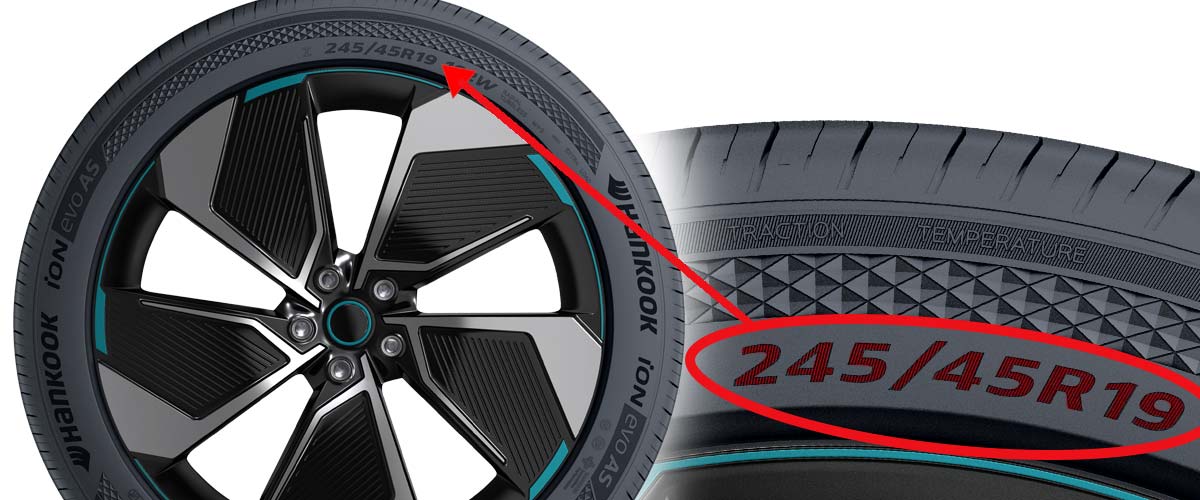
What makes Tires for Electric Vehicles Different?
Tires appropriate for EVs offer a lower rolling resistance to help maximize your overall range. Additionally, tires that work with EVs should withstand the added weight of all those batteries with a higher load index (the maximum safe carrying capacity of a tire when it’s fully inflated), and overall performance thanks to specialized tread and rubber compounds. This same tread, along with a tire foam insert (found in some tires) can also reduce road noise and improve ride comfort. Bottom line, tires that are ideal for electric vehicles are built for safety, speed, and battery economy.
Rolling Resistance
Low rolling resistance tires lose less energy as they roll across the pavement. This reduction can improve fuel and range efficiency.
Weight-Bearing Capacity
EVs are heavy. Get a set of tires with a higher load index to bear that added weight.
Range Optimization
The range an EV can travel depends on a number of factors, including wind resistance, elevation climb, speed, as well as the rolling resistance of the tires.
Noise Reduction
Special tread, as well as foam inserts, can impact road noise, making for a quieter, more comfortable ride.
Aerodynamics
Narrower tires may help increase EV range, as can a thicker sidewall. Both of these tire designs are known to improve or lower rolling resistance.
Are EV Appropriate Tires More Expensive?
The short answer is, not necessarily. As long as your vehicle has standard-size wheels you won’t likely spend much more. However, tires for 19- or 20-inch wheels can cost more for both EV and gas-powered vehicles. See what size tires you need with the Les Schwab tire size calculator.
While the price of specialized tires may not differ much from others, the tires you choose could wear faster depending on the EV vehicle, where you drive, and how you drive. In other words, you may need to buy tires more often for safety and overall performance.
How to Choose Tires for Your EV
Before buying a set of tires for your EV, make a note of your wheel size, vehicle weight, and the performance features you want and need. Then stop by Les Schwab. Our pros can help you pick the right tires for your EV.
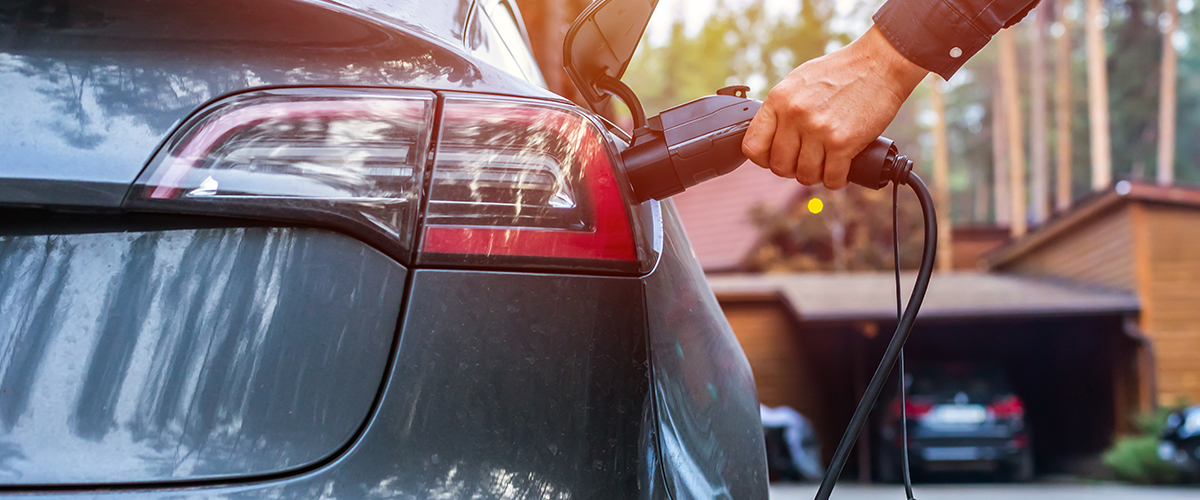
Things to consider as you choose a set of EV appropriate tires include:
Tire size and compatibility
The right size tires for your EV help support the weight of your vehicle as well as safety and performance needs.
Range
Maximizing range and efficiency may require a focus on tread patterns and tire sizes.
Traction and Grip
Do you need tires for off-road adventures or just highway trips?
Noise and Comfort
How much do you appreciate quiet and comfort in your trips to the store?
Price and Value
The more features you find in a set of tires, the more they will cost overall. This can include mileage warranty, tread pattern, winter or all-season performance, and more.
Les Schwab Carries Tires for Your EV
You’ll find the tires you need for safety and performance at Les Schwab. That includes all-season tires, off-road options, winter tires, and tires appropriate for e-powered performance.
-
Les Schwab Tech Tip: How Flat Tire Repair Works
The tires on your vehicle come in contact with a lot of roads, highways, and more. Sometimes items on those roads include nails, screws, or other objects that can find their way into your tires. This is typically what causes a flat. At Les Schwab, we’re proud to fix flat tires across the West, and get you and your family safely back on the road. Here’s a quick rundown of our process that helps us fix almost 2-million flats at year — often at no charge.
Step 1: We put your vehicle on a lift and perform an inspection. This includes looking over the tread of the tire, the sidewalls, stem (air valve), and looking for exposed belts. This first step can often tell us if your tire can be repaired or needs to be replaced.
Step 2: We remove the wheel and tire assembly. To find all possible issues, we submerge the whole wheel and tire assembly in a water tank to locate and mark the cause of the leak. Once again, the tire expert will determine if the flat can be repaired.
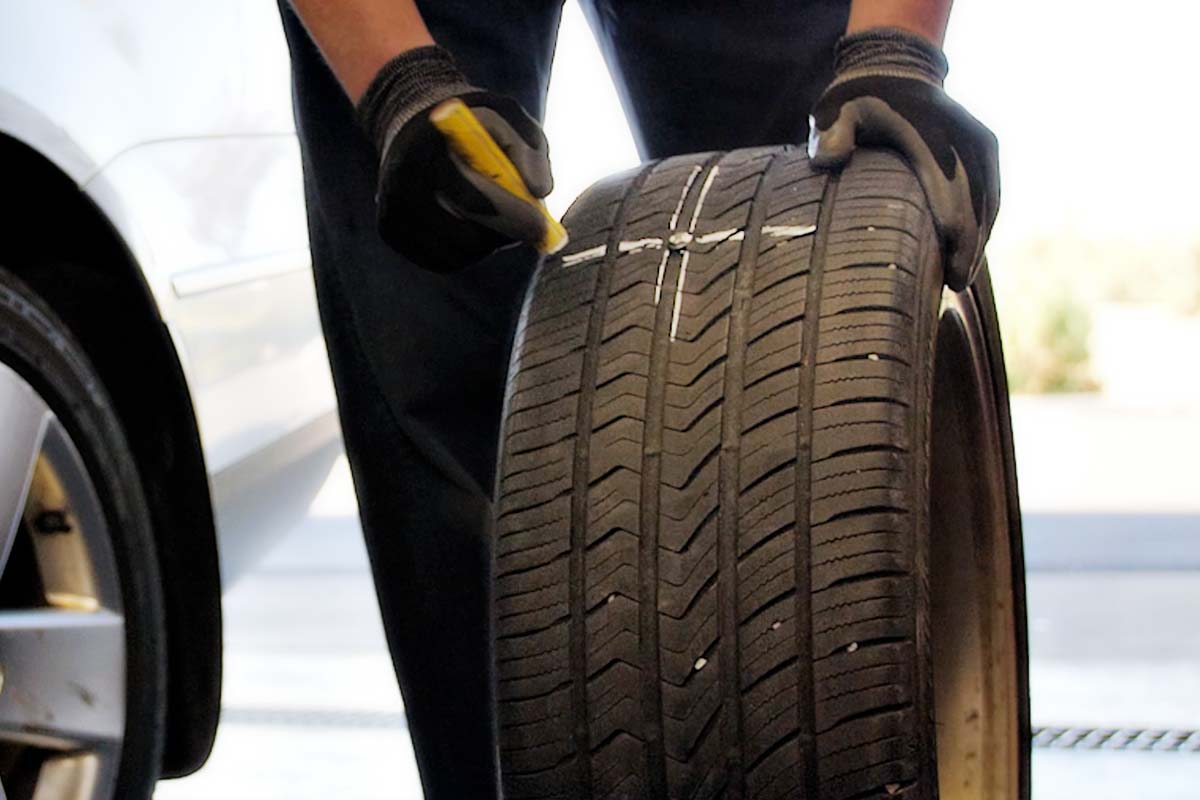
When Replacement is Necessary
According to the Tire Industry Association guidelines, all repairs on any tire are limited to the tread area, not on the shoulder or sidewall. If your tire is damaged beyond repair, or the sidewall is damaged, the tire should be replaced.
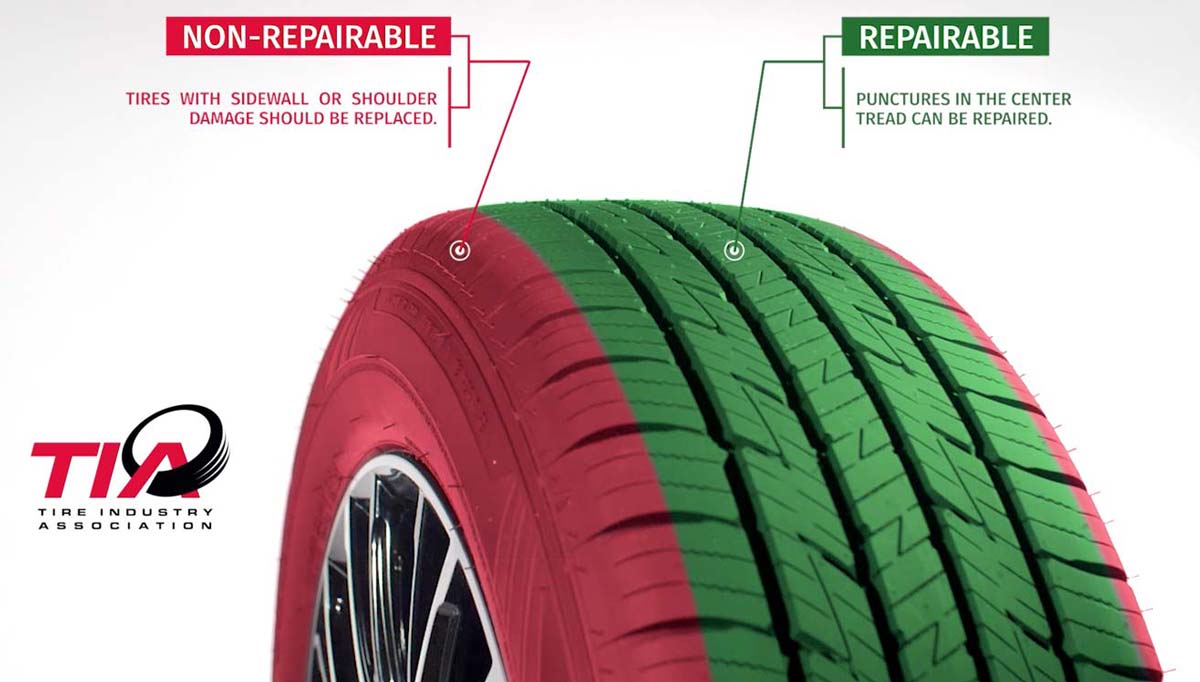
Step 3: If it can be repaired, the technician working on your vehicle will remove the tire from the wheel and prep it inside and out.
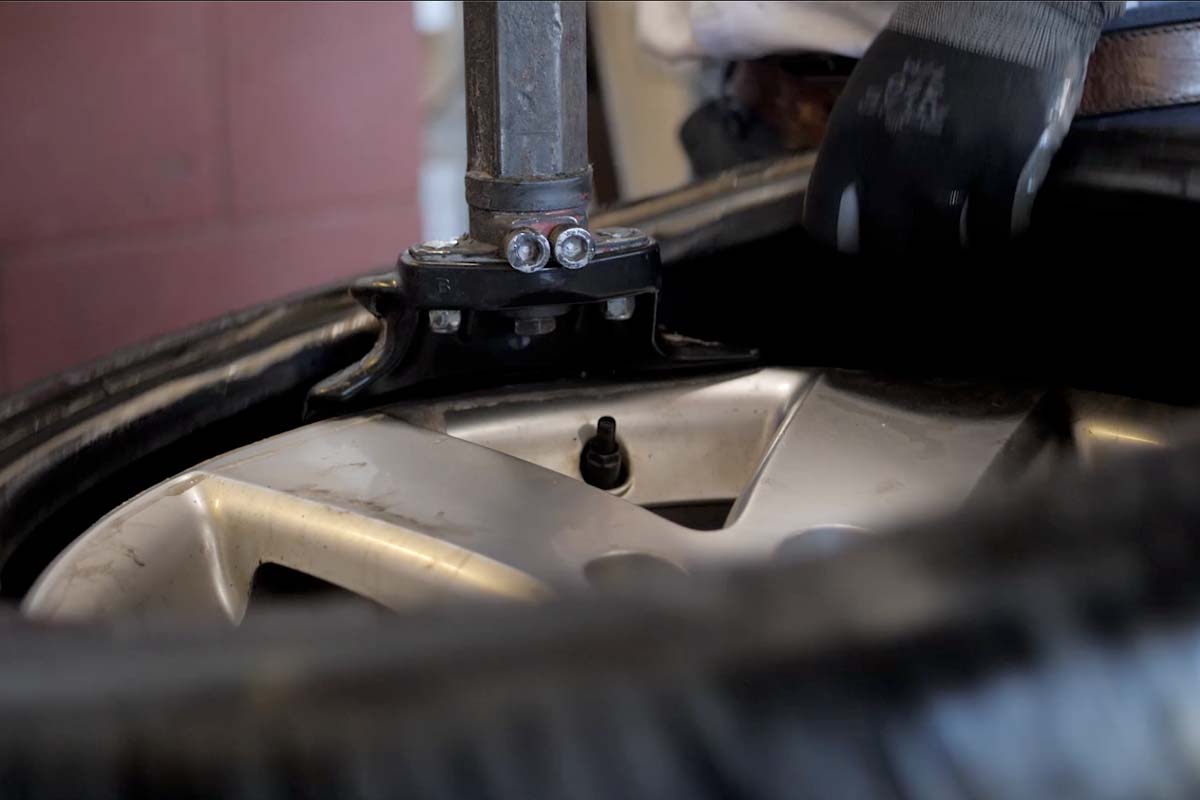
Step 4: Oftentimes, we remove the object and drill the damaged area at the angle the object entered the tire. We then buff and clean the inside, cement it, then apply a plug/patch combination and sealer. Depending on the angle of the puncture, a 2-piece patch may be required.
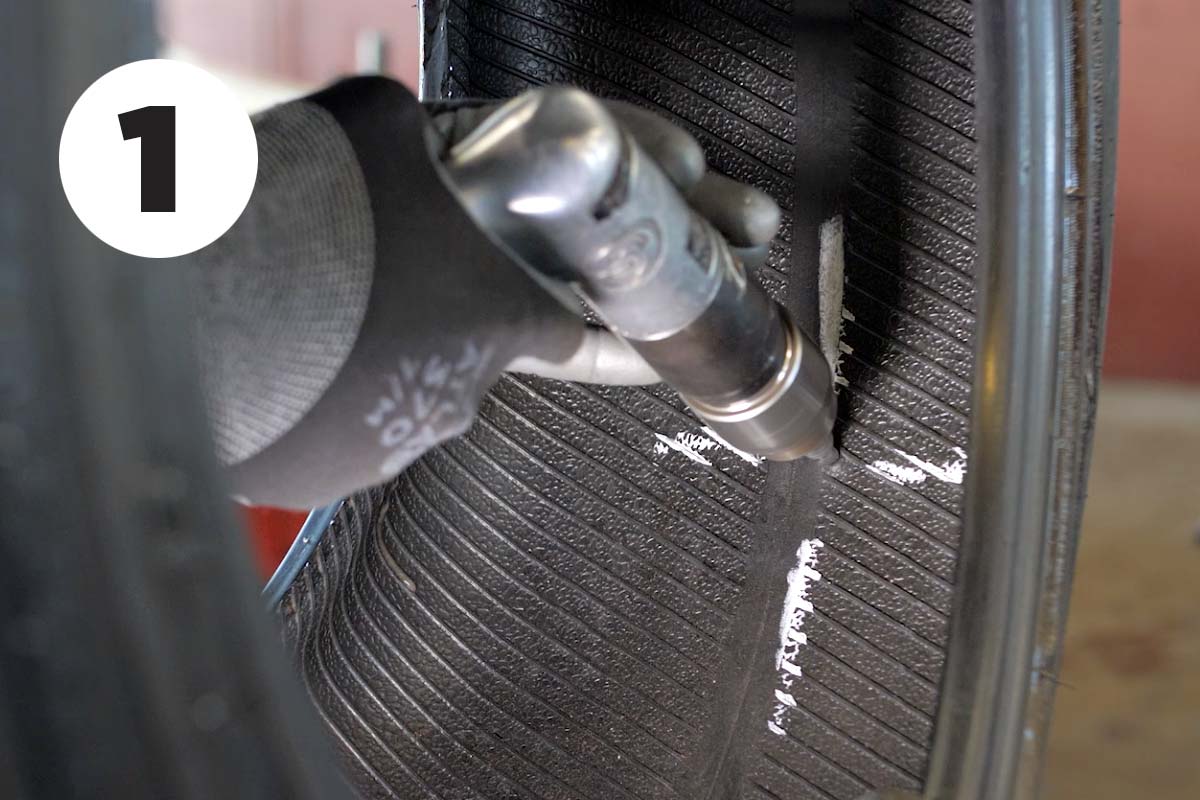
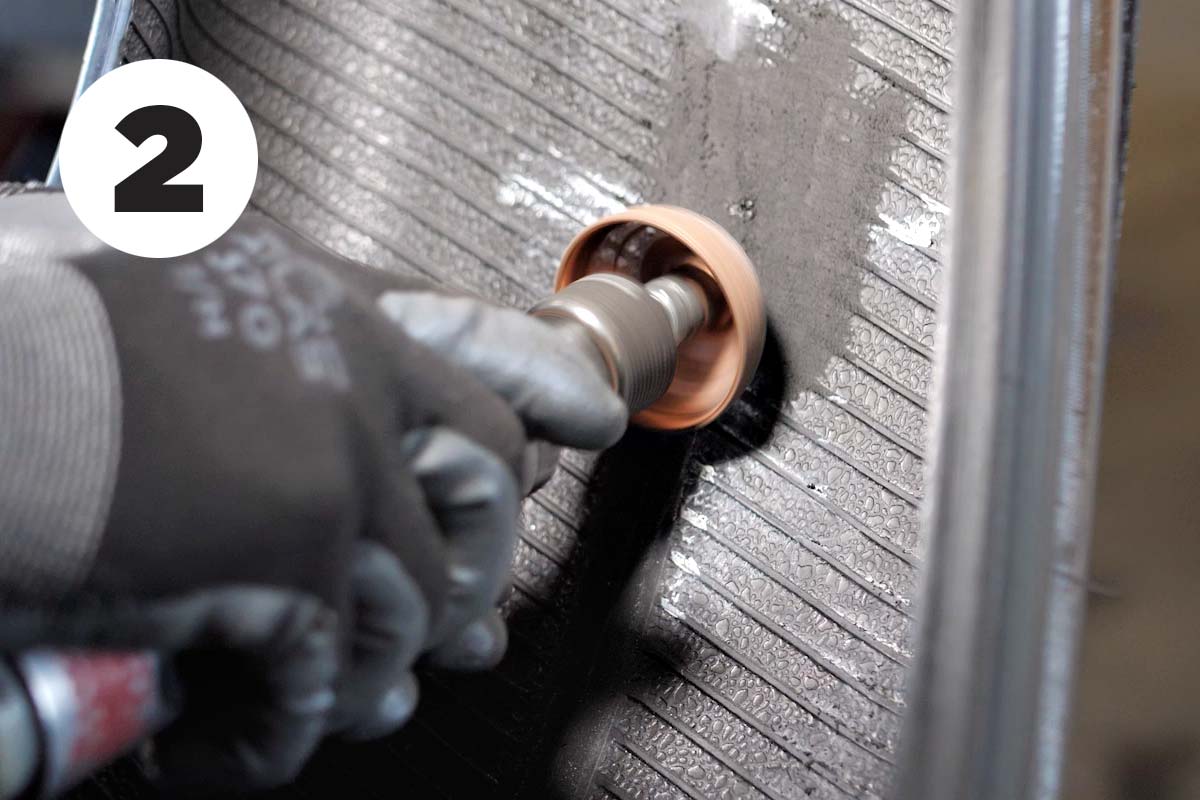
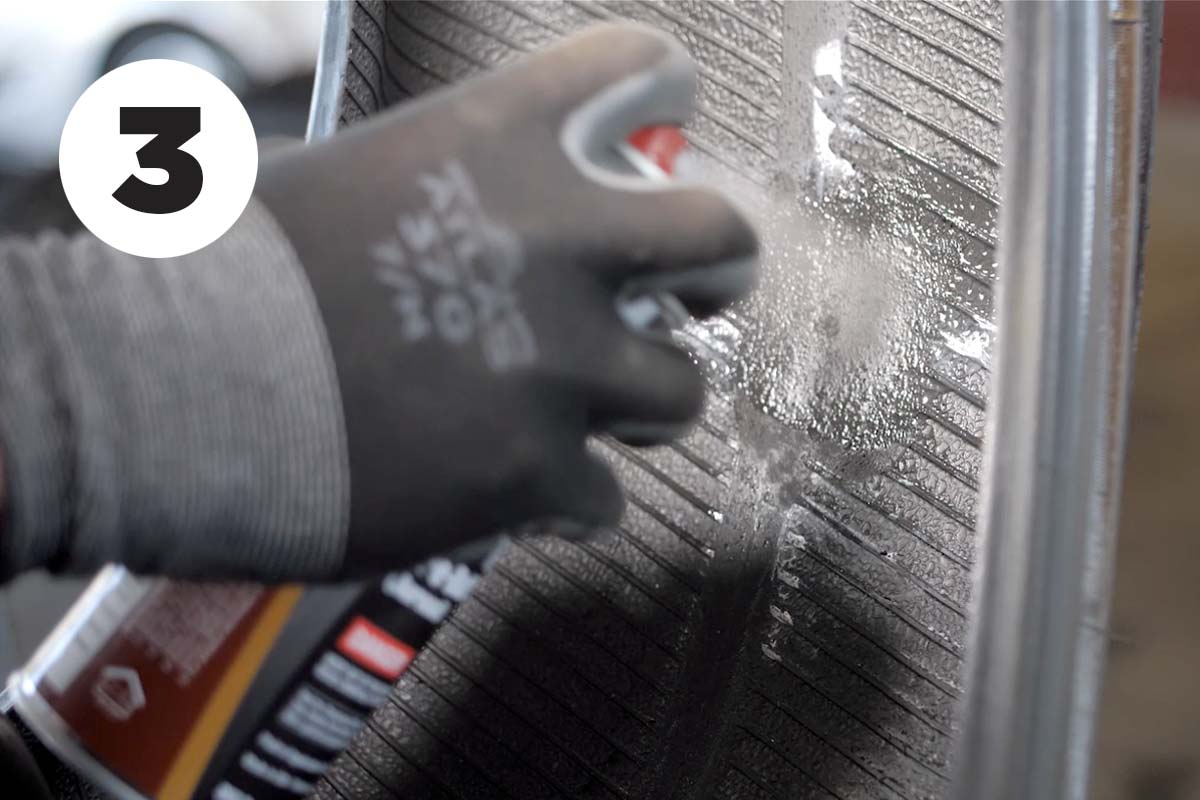
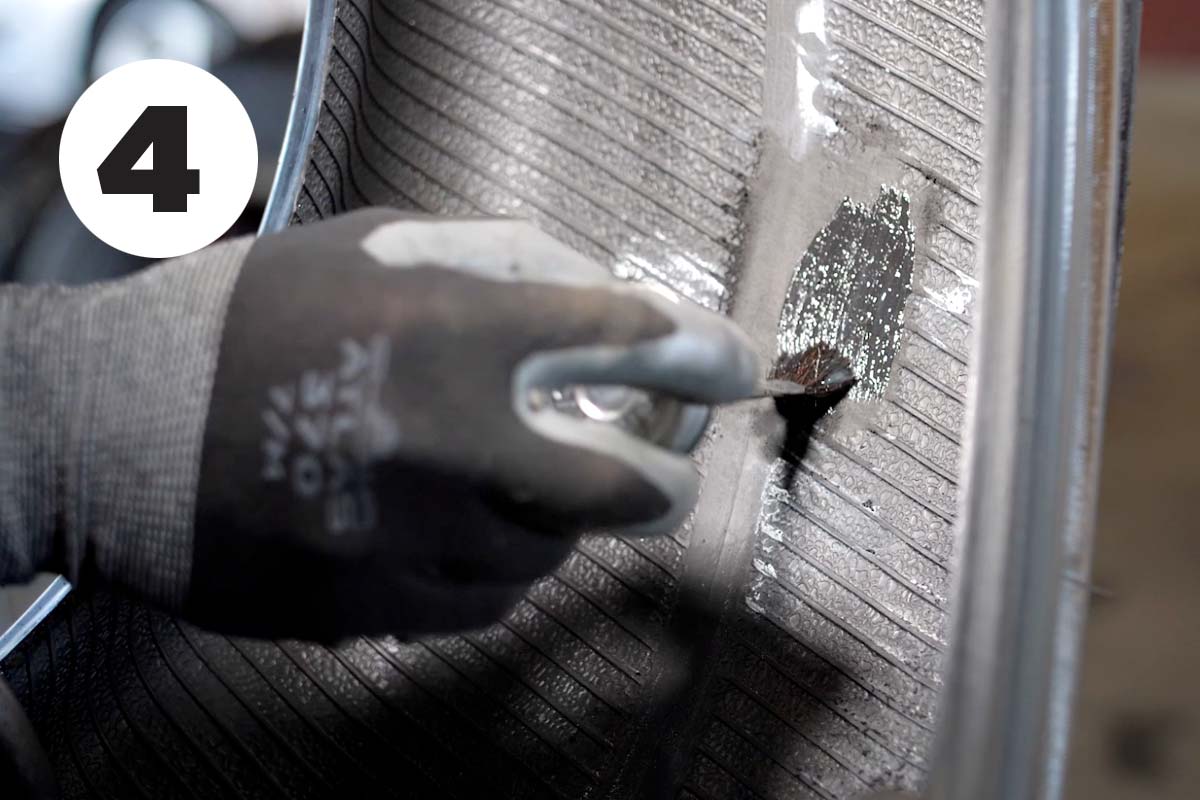
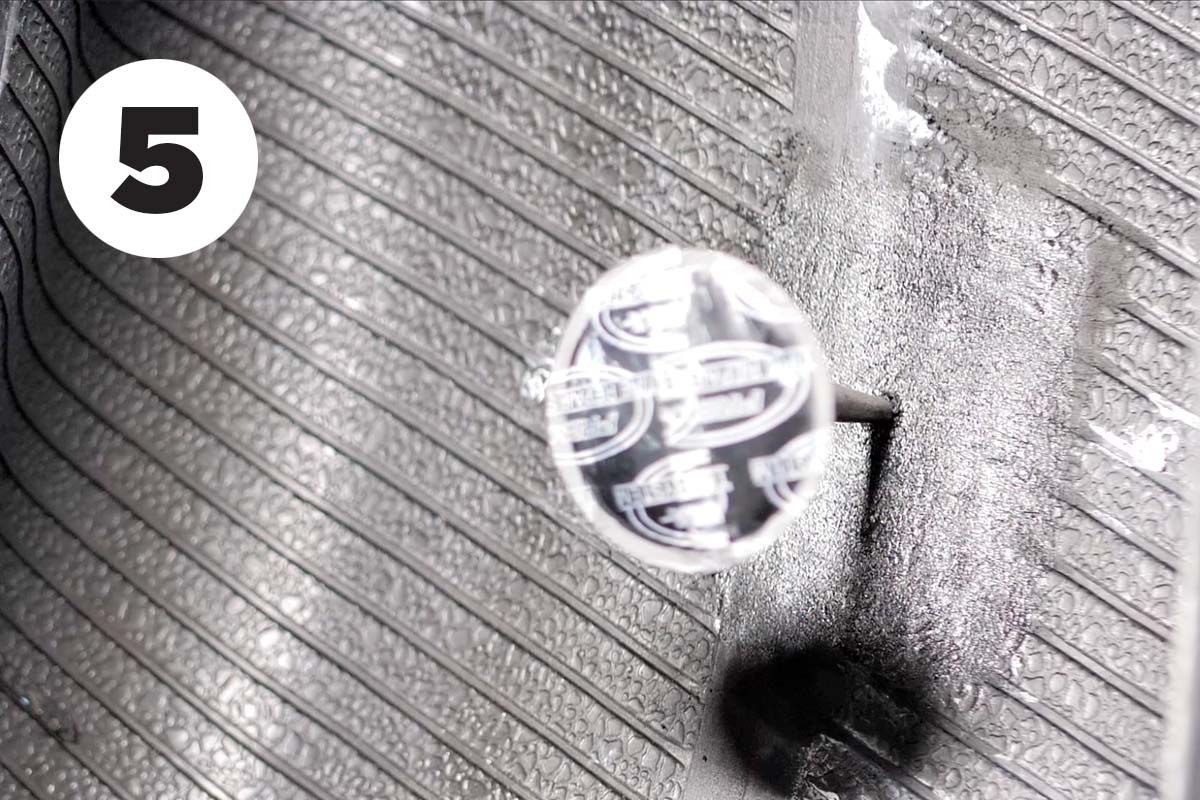
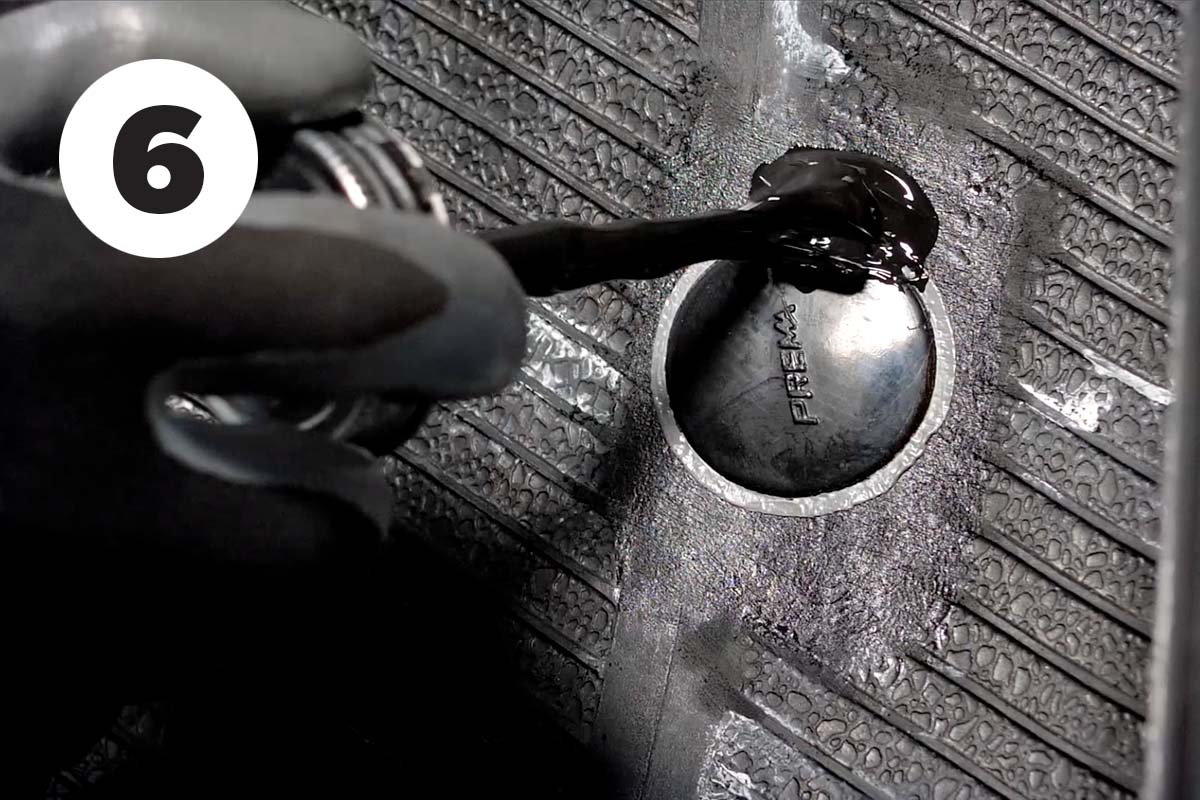
Step 5: Before reinstalling the wheel, we double-check the patch by placing the tire and wheel in a water tank. This is done to verify the patch was done properly and there are no leaks.
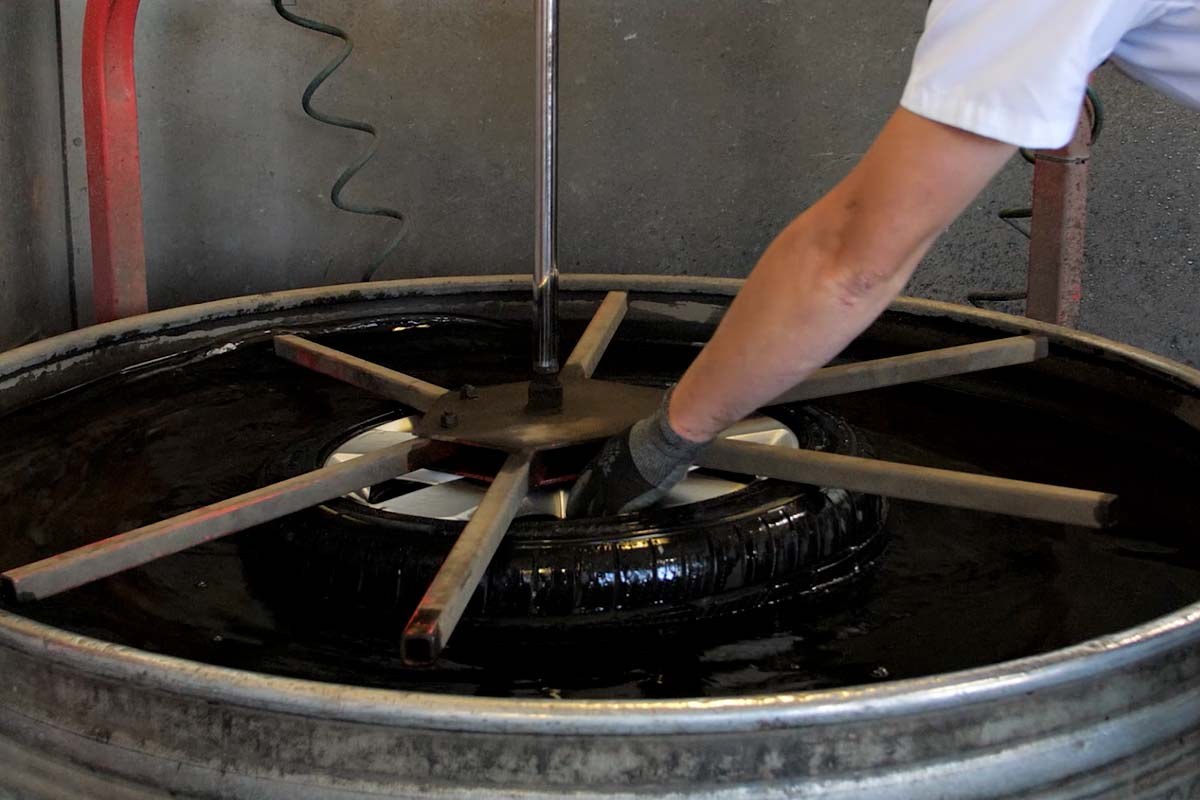
Once your tire is back on your vehicle, we’ll check the pressure on all four tires. Then, we’ll ensure Tire Pressure Monitoring System is reset as part of our World Class Customer Service. After that, you’re good to go.
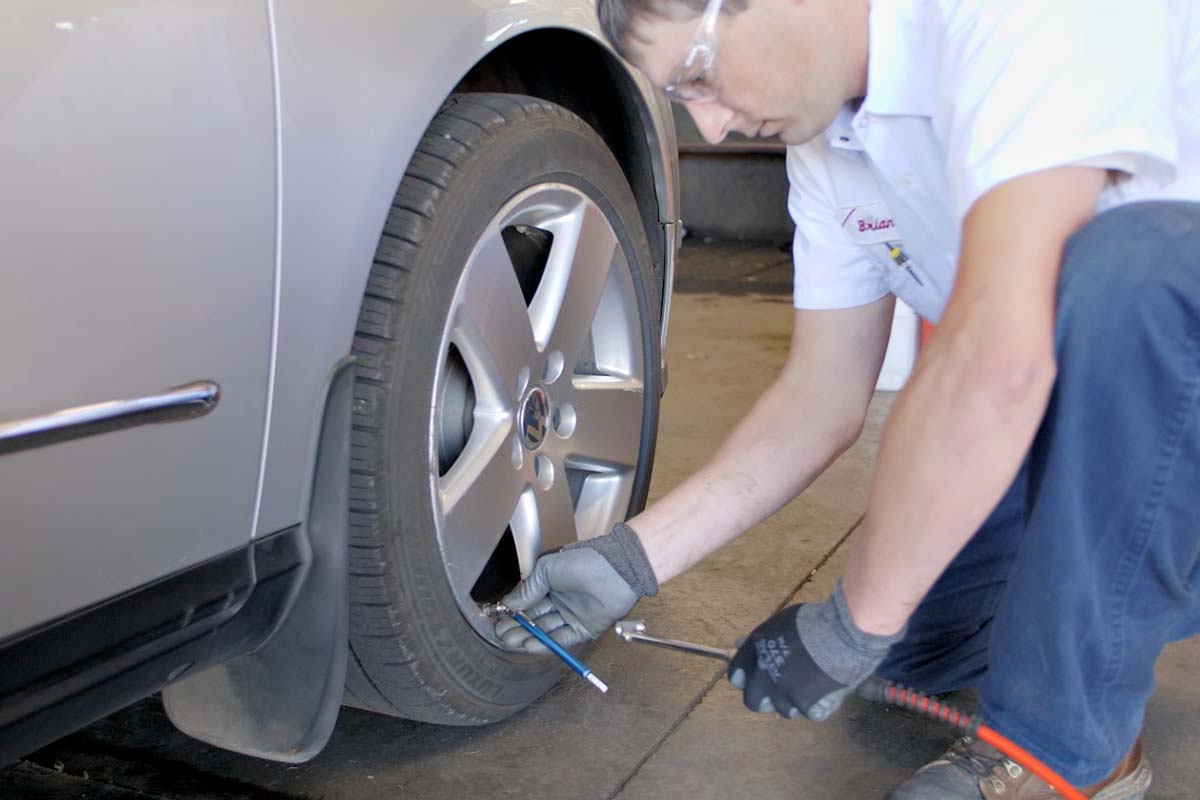
Get the Les Schwab Tire Warranty
When you buy your tires from Les Schwab, they come with our Best Tire Value Promise, including free flat repairs. And when you bring your flat tires into Les Schwab for repair, you’ll go home with information on your repair, your tire’s tread depth, air pressure, and information on what caused the leak.
Schedule a Flat Repair -
What Are Studded Tires & When Should You Use Them
If you’ve ever driven through a winter storm, you know it can get a little tense. Especially when roads are covered in snow and ice. You might not be able to avoid winter, but you can be ready for it with a set of winter or snow tires, including studded options. We have some tips to help you make the right choice about studded winter tires, how studs keep you in control, and when they can be used in your state.
What Are Studded Tires?
Studs are lightweight, small metal spikes (studs) that are staggered and inserted across the tread of a winter tire. These studs protrude slightly from the rubber tread surface, helping break through packed snow and ice-covered roads to give you better traction. Note: Extra tread depth is needed to accommodate studs, so studded tire size options are often limited.
How & Where Do Studded Tires Work?
A good set of tires is essential for winter driving, whatever the weather. If you’re heading into snow and ice, studded tires can have a big impact on your safety. A vehicle equipped with winter traction tires can stop faster on ice than a car without those tires — even if you’re driving just 15 miles per hour.
Studded tires work best on snow and ice-covered roads that have yet to be fully plowed. As the studs pierce the ice and snow, they provide extra traction to keep you safe and in control.
Why Are Studded Tires Used For Winter Driving?
Snow tires, and especially studded winter tires, are specifically designed to help you stay on the road in snow zones or mountain regions where the temperature regularly drops below 40 degrees. Snow tires are distinguished by a mountain snowflake symbol on the sidewall of the tire. This indicator means the tires have been tested and proven for snow, ice, and slush.
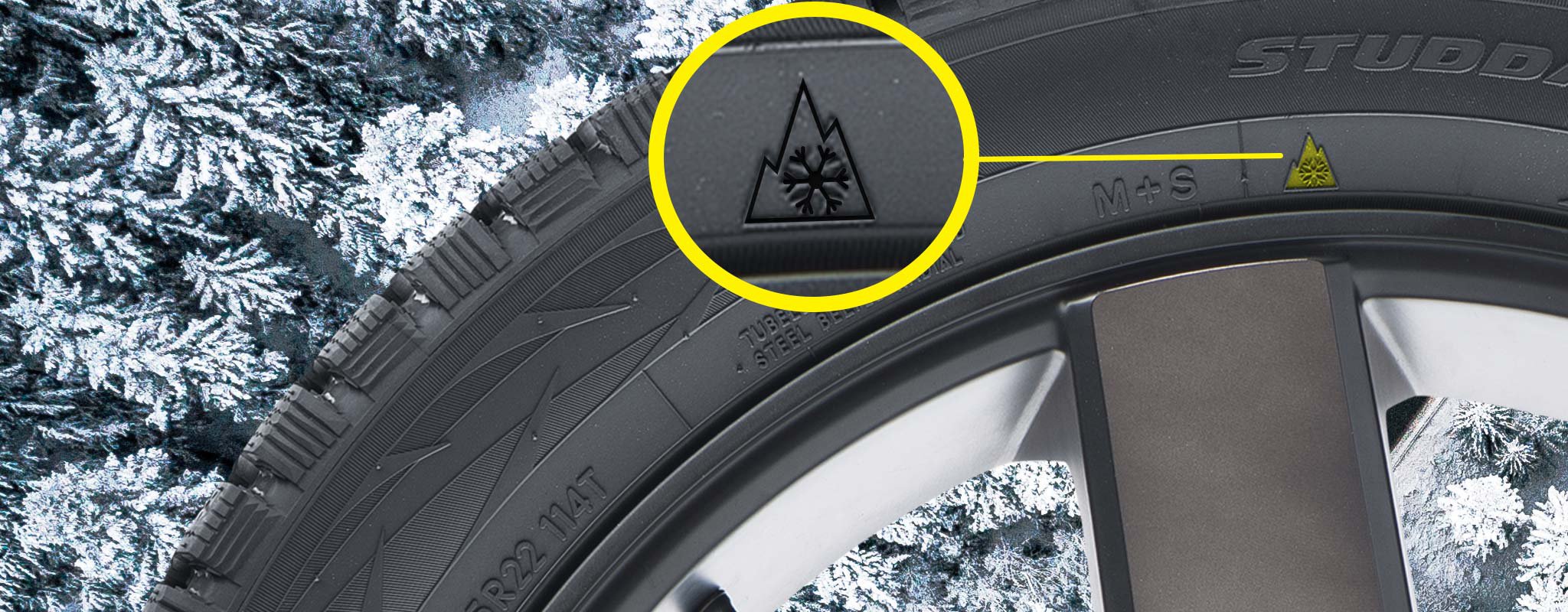
The benefits of snow tires include improved traction, vehicle handling, and skid control thanks to deeper, wider, and more jagged tread than regular tires. This tread allows the tire to pick up snow and maintain traction. The studs on some of those tires give them added grip on snow and ice.
Are Studded Tires Always the Best Option for Winter?
Studded tires are not always the best option for safe winter driving. Studded tires provide optimal traction on ice or packed snow. But studless winter tires work well on slush and packed snow thanks to wide, deep grooves in the tread and lots of irregular surfaces with sharp edges. These allow the rubber to cut through the snow and grip the road.
As temperatures steadily rise, it’s time to replace your winter tires with all-season or performance tires. We recommend swapping back when you do not plan to drive on snow or ice-covered roads, or when nighttime temperatures are consistently 50º F. As temperatures rise, the special rubber compound found in winter tires can wear out much faster.
Les Schwab Tip: If your winter tires have studs, your state has specific dates those tires must be removed from your vehicle. Find your state’s information here.
Les Schwab can help you choose the right winter tires for where you drive, including a good knowledge of local state laws.
What’s the Difference Between Studded and Studless Tires?
Winter tires are designed to provide extra traction and control on snow and ice. The differences between studded and studless winter tires go beyond tiny metal studs.
Studless snow tires offer great traction for most winter conditions without the metal spikes. Wide, deep grooves in the tread help keep you in control.
Studded tires have spikes or studs that break through packed snow and ice for added traction.
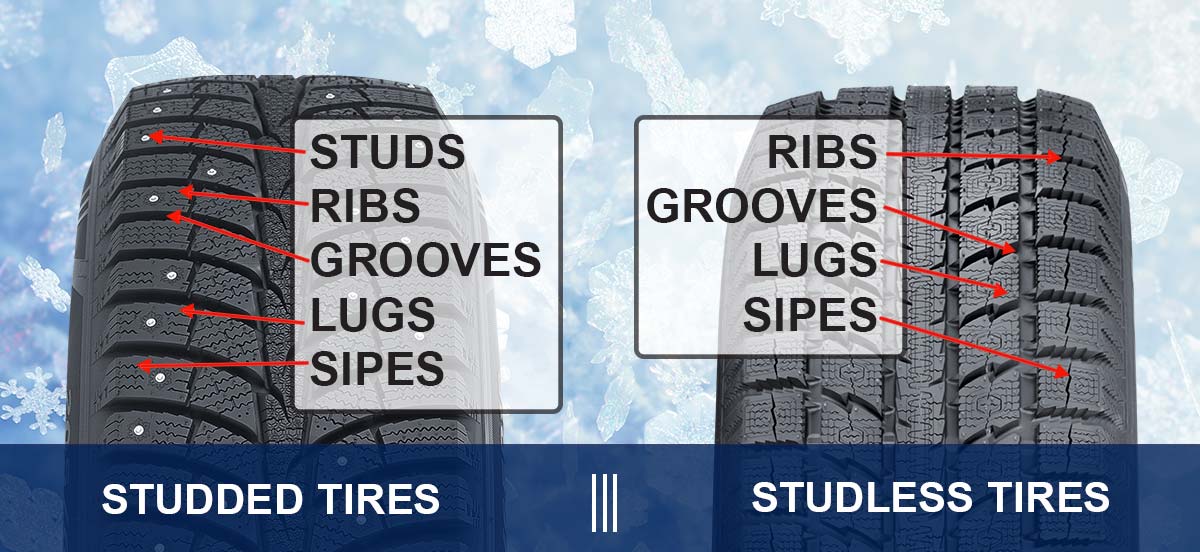
When Can I Use Studded Tires & When Do I Have to Remove Them?
If you do choose a set of studded winter tires for your vehicle, remember there are state-by-state laws regulating when and where you can use them. U.S. states that do allow studded snow tires permit their use from mid-winter to early spring. Driving outside specified dates can carry a steep fine along with plenty of disapproving looks from your fellow drivers.
Stud Laws by State
Studded tire use is regulated by each state. Driving with studded tires on clear roads not only wears down your studs, it can also decrease stopping distance. That’s because your tread is not making optimal contact with the road — your studs are.
For legal stud dates in your region, check out this state-by-state list of studded tire regulations as reported by the U.S. Tire Manufacturers Association.
How Much Do Studded Tires Cost?
The price for a set of studded winter tires depends on the size of tire you need for your vehicle, the features of those tires, the warranty, as well as other options. The experts at Les Schwab can help you choose the right winter tires for your car or truck.
Are Studded Winter Tires Right for You?
Depending on where you drive and the winter conditions you face, studded winter tires could add safety to outings in tough winter conditions. Studded or regular winter tires could be a good choice if you’re a winter sport enthusiast, often navigate unmaintained winter roads, or if you plan to drive in the snow and ice every week. The pros at Les Schwab can help you face winter with the right tires.
Let Les Schwab Help You With Your Studded Tire Needs
The right set of winter tires can be found at your local Les Schwab. Stop by today or schedule an appointment and we’ll help you decide on the best winter traction to keep you in control and safely on the road.